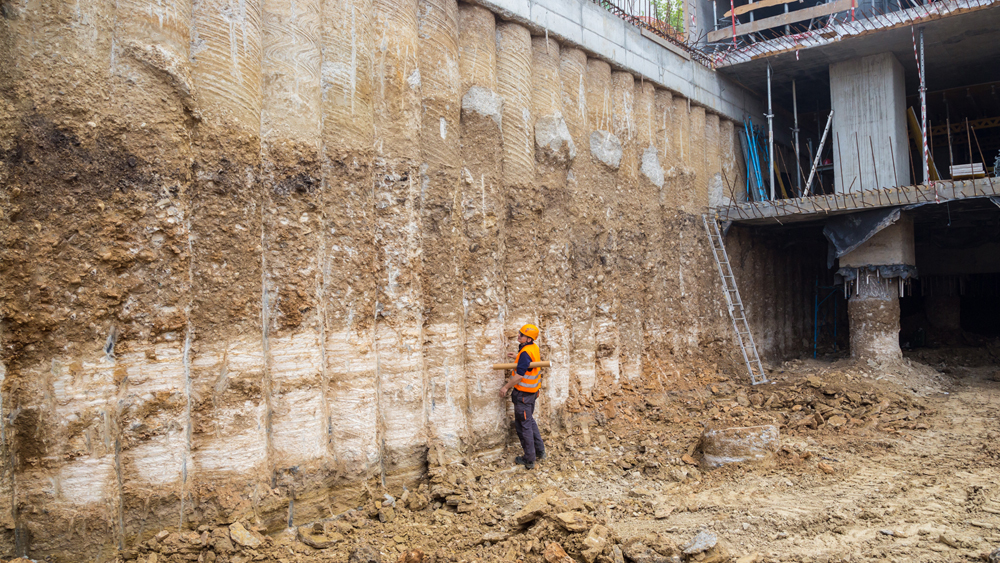Why Employing a Geo Tech Engineer is Vital for Facility Building And Construction Projects
Why Employing a Geo Tech Engineer is Vital for Facility Building And Construction Projects
Blog Article
The Interdisciplinary Approaches in the Geotechnical Market: Linking the Void Between Design, Geology, and Environmental Science for Optimal Task End Results
The assimilation of design, geology, and environmental science within the geotechnical sector is not simply helpful; it is necessary for accomplishing optimal task results. What strategies might arise to facilitate this vital cooperation and improve the efficacy of geotechnical methods?
Importance of Interdisciplinary Cooperation
The relevance of interdisciplinary collaboration in the geotechnical industry can not be overemphasized. Reliable geotechnical tasks require the assimilation of varied experience from different fields, including design, geology, and ecological scientific research. This partnership ensures that all aspects of a job are taken into consideration, causing detailed options that attend to complicated difficulties.
When working in seclusion,Interdisciplinary partnership cultivates technology by making it possible for professionals to share understandings and methods that might not be obvious. By leveraging the staminas of multiple disciplines, groups can determine potential risks, optimize design procedures, and improve the sustainability of geotechnical tasks. Such collaboration advertises an alternative understanding of site-specific conditions, which is critical for precise assessment and decision-making.
The complexity of geotechnical tasks requires a worked with method to analytical. Eventually, interdisciplinary collaboration is necessary for progressing finest techniques and attaining excellence in the geotechnical market.
Secret Roles of Each Self-control
Partnership among various self-controls is not just useful; it is vital for the effective execution of geotechnical jobs. Each discipline-- design, geology, and environmental scientific research-- plays a distinct yet interconnected duty that adds to predict efficacy and sustainability.
Geotechnical designers are largely liable for developing foundations and making certain structural honesty. They assess soil and rock residential properties to examine load-bearing abilities, offering vital data for risk-free building and construction methods. Their proficiency allows the formula of innovative options to complicated difficulties.

Environmental scientists assess the potential effects of building on ecosystems and water sources. They carry out ecological analyses and create mitigation techniques to decrease negative results. By integrating environmental factors to consider, they make sure compliance with regulations and promote sustainability throughout the task lifecycle.
Study of Effective Assimilation
Successful assimilation of geotechnical techniques can be exemplified via various case researches that highlight the effectiveness of teamwork in resolving intricate engineering obstacles. One notable example is the building of the Hong Kong-- Zhuhai-- Macau Bridge, where a collective method involving geotechnical design, geology, and ecological scientific research was essential. Engineers and geologists functioned in unison to evaluate the seabed conditions and maximize the foundation design, making certain stability and decreasing ecological impact.
One more impactful instance is the improvement of slope stability in the San Francisco Bay Location, where an interdisciplinary team integrated geotechnical analysis with ecological analyses. By integrating hydrological studies and geological surveys, the group properly determined potential landslide dangers and implemented efficient reduction procedures, improving security and sustainability.
Moreover, the redevelopment of Brownfield sites commonly needs a multidisciplinary technique. In one instance in Chicago, collaboration why not check here among geotechnical engineers, environmental scientists, and urban organizers led to the successful removal of infected dirt, permitting the risk-free makeover of the site into an area park. These study show that interdisciplinary partnership not just addresses technical challenges but additionally promotes cutting-edge services that profit both communities and tasks.
Difficulties in Multidisciplinary Projects

In addition, coordinating timetables and workflows amongst numerous teams can be bothersome, specifically when each discipline has distinct project milestones and deliverables. This misalignment can lead to delays and raised expenses. The challenge of resource appropriation likewise looms large; making certain that specialized proficiency is offered at crucial junctures requires careful preparation and foresight.
Lastly, regulatory compliance positions one more considerable challenge. Each technique might encounter various regulatory structures, and lining up these needs to satisfy task purposes can be time-consuming and complex. Resolving these obstacles requires strong leadership and efficient interaction strategies to cultivate cooperation and make sure that multidisciplinary groups work cohesively in the direction of shared objectives.
Future Trends in Geotechnical Practices
As the geotechnical industry evolves, arising trends are improving practices to deal with the difficulties encountered in multidisciplinary tasks - engineer special info of record. One significant trend is the increased assimilation of innovative modern technologies, such as expert system and artificial intelligence, into geotechnical analysis and design. These technologies improve anticipating modeling and danger analysis, enabling designers to make even more educated decisions throughout the project lifecycle

In addition, the adoption of electronic doubles and real-time monitoring systems is ending up being a lot more prevalent. These devices promote ongoing assessment of soil problems and structural performance, enabling for timely treatments when issues occur.
Conclusion
To conclude, the combination of engineering, geology, and ecological science is essential for attaining ideal end results in the geotechnical industry. Interdisciplinary partnership cultivates innovation, improves analytical capacities, and aligns technical requirements with environmental sustainability. Effective study illustrate the advantages of this approach, while acknowledging the challenges dealt with in multidisciplinary tasks. Looking ahead, embracing these collective methods will be essential for browsing future patterns and progressing the field of geotechnical engineering.
The integration of design, geology, and environmental science Resources within the geotechnical sector is not simply useful; it is necessary for accomplishing optimal project end results. Reliable geotechnical tasks need the combination of varied competence from numerous fields, consisting of engineering, geology, and ecological scientific research.Navigating the intricacies of multidisciplinary projects in the geotechnical market presents several substantial challenges.As the geotechnical industry develops, emerging fads are reshaping techniques to attend to the difficulties faced in multidisciplinary jobs. Geotechnical designers are significantly collaborating with ecological scientists to ensure that jobs align with sustainability objectives and conform with governing demands.
Report this page